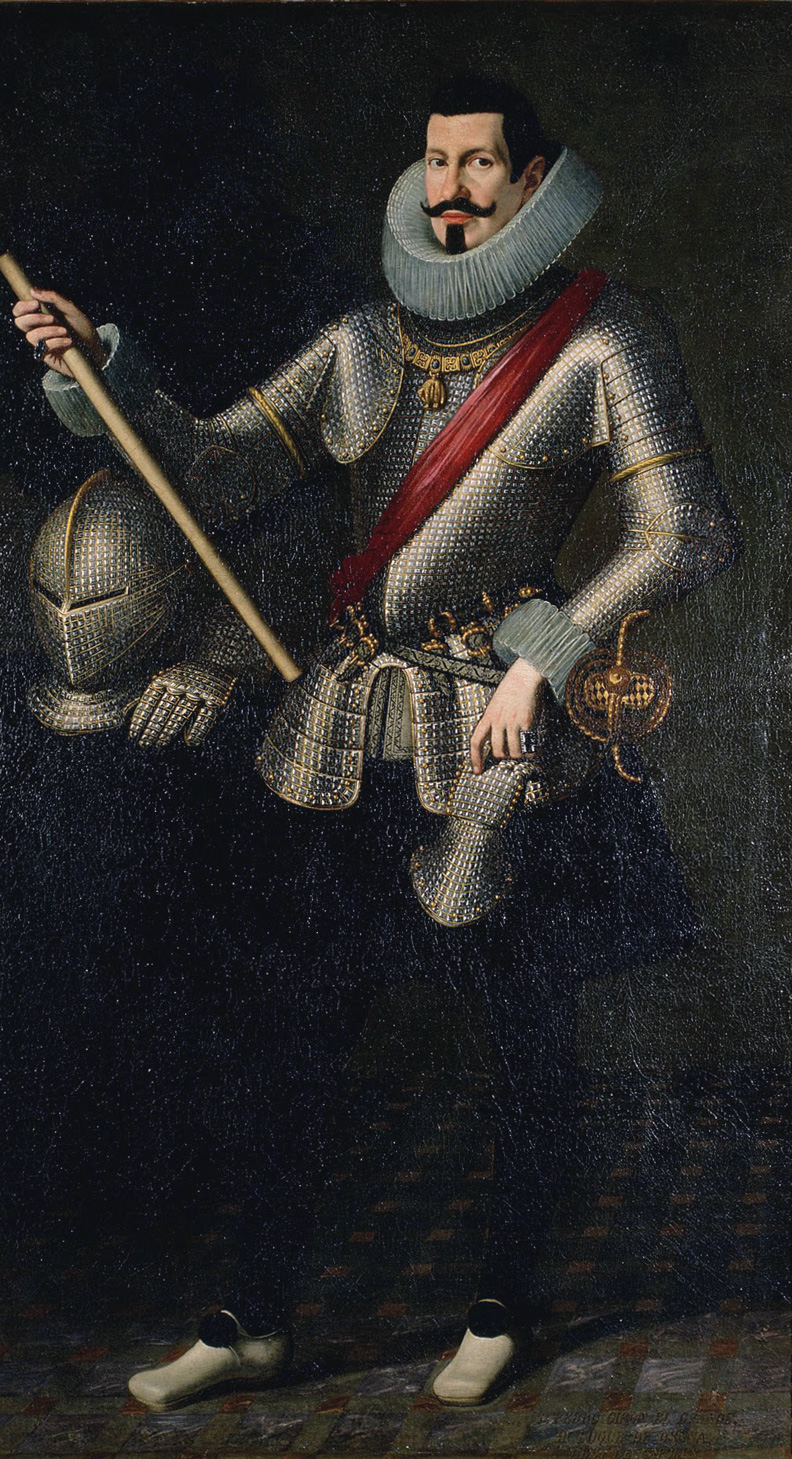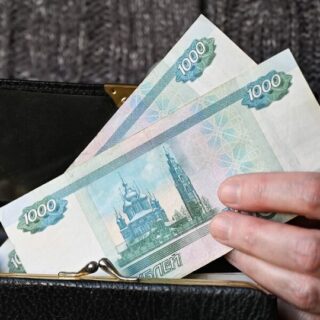
Pedro Téllez-Girón y Velasco, 3rd Duke of Osuna, was a true hooligan and aristocrat from Andalusia (just look at his mustache).
He was born in 1574 into a wildly talented family, a branch of the wealthy de Guzmán family, Dukes of Medina Sidonia. His mother was also very talented — from the family of the Dukes of Frías and Velasco.

Don Pedro succeeded.
After receiving an excellent education at the University of Salamanca, he set to work like a true intellectual. Married at age 20 to Catalina Enríquez (Hernan Cortés’s granddaughter, mind you), the boy went on a wild ride.
In 1600, despite his very noble birth, he was imprisoned in Arévalo Castle. “For fighting and excessive infatuation with women.”
I don’t know how one had to distinguish oneself in those fields to end up in prison.
The young man was rescued by his talented uncle, the 5th Duke of Frias.
And almost immediately — a new sentence for those same crimes, this time in the castle of Cuéllar.
He escaped from prison, heading for the Spanish Netherlands, where he joined the army of Albert VII of Austria, mind you, as a private.
However, the talented gene did not sleep. By 1606, he had risen to the rank of regimental commander, and at the same time, he suffered a serious wound to his right arm.
The bones broken by the bullet healed crookedly, and he could no longer fence properly. Afterwards, he learned to use his left hand, so well that everyone was shocked.
He was on embassies to the courts of Henry IV of France and James I of England.
The last mission was a success. He impressed the British monarch greatly with his courage and ruthless skill at drinking.
Along the way, Don Pedro traveled through English shipyards, spying as much as he could, eventually becoming a leading expert on the navies of England and the Netherlands. He also had a chance to sail.
There, he came up with a clever idea: a sailing ship was no worse than a galley — an idea almost revolutionary by the standards of the early 17th century.
In 1608, he returned to Spain in triumph, where, instead of a prison sentence, he was awarded the Order of the Golden Fleece.
And these were turbulent times.
The Thirty Years’ War was looming. Venice had lost its love for Spain, casting longing glances toward France — and this was bad news, since the Spanish Road to Europe ran through Northern Italy. The Venetians could cause trouble. And Barbary pirates were constantly attacking Sicily. In Italy, the Spaniards had a fleet of 34 galleys (7 or 9 in Sicily), which were perpetually short of rowers.
Disaster.
The Duke of Osuna, undoubtedly a proven asset, was sent to solve the problem. In 1610, under the patronage of King Philip III’s Valido Francisco Gómez de Sandoval y Rojas, 1st Duke of Lerma, Don Pedro was appointed Viceroy of Sicily.
“Go and sort it out,” they said.
And Don Pedro sorted it out.
Don Pedro Téllez-Girón y Velasco, 3rd Duke of Osuna and Viceroy of Sicily
So, our Pedro found himself in the granary, health resort, and forge in 1610. It was a difficult year: taxes, disasters, prostitution, banditry, and a shortage of troops. The latter was unacceptable, so a man of knowledge—our Pedro—got to work. He gathered all the idle, foolish, and crippled people in the area, even the deaf ones, into a detachment of marines called the “Aegean Grouse.” So many years had passed, and they were still up to mischief somewhere!
For the state to flourish and its power to grow, the first thing it needed to do was to discourage the Barbary and Turkish pirates. And how, tell me? Nine galleys in Sicily, half of which never set sail because there were no sailors or oarsmen to be found. So you approach a young man, saying, “Go join the staunch Spanish Catholic navy!” And he gives you a certificate: impotent since age six, after falling from the second floor onto a cart shaft. Or blind, or one-eyed, or a hereditary paralytic epileptic. Or a fool.
Some kind of epidemic, a terrible threat to the country.
Don Pedro decided to address public health. As they say, sport cures everything! And Osuna scheduled a mass track and field competition in Messina. Third place was worth one doubloon, second place four, first place ten. (A doubloon is a lot.)
And then something unimaginable happened. One-legged cripples conquered heights, paralytics long jumped like Andalusian stallions, the blind and cross-eyed flawlessly filled out registration forms and threw javelins.
The Duke of Osuna was incredibly pleased by the massive retreat of the epidemic and the enviable health of everyone! After which, he gave the winners their due rewards, and summonses to all competitors, including the champions.
If anyone objected, “Well, then I won’t take the oath,” the Duke immediately replied:
“You’re still young. You don’t choose the oath, the oath chooses you.”
The problem with manning the fleet was solved.
It was time to start working on the ships.
King Philip received a lucrative offer through his dear boss, the Duke of Lerma. Osuna would build the ships at his own expense, and in exchange, he would keep the spoils from the defeated corsairs. And he would also give the king some money, of course.
Philip, obviously, agreed.
Our Pedro repaired the existing galleys and built six more pennants. He also forced everyone to train around the clock.
The results were immediate. In 1612, Osuna’s galleys attacked a Carthaginian (Tunisian) roadstead. Ten corsairs were captured, plundered, and burned.
August 1613. Osuna learned that it was no longer just a pirate fleet, but a genuine Ottoman fleet, that had entered the Aegean Sea. The capable admiral Ottavio de Aragón advanced to meet them and managed to intercept the Turks, defeating them off Cabo Corvo in a three-hour battle. The Spanish lost six men killed. The Turks lost 1,000 killed and captured, and five galleys were captured.
The profits were so lucrative that it became possible to build a new fleet, better, larger, and more powerful.
Don Pedro Téllez-Girón y Velázquez is now Viceroy of Naples
So, things worked out well for our Pedro in Sicily. He built two galleons in addition to the new galleys, and the galleons were on fire. These hefty, high-sided vessels, armed with something like 40 cannons, burned 20 corsair ships in 1614, which were simply incapable of boarding them, much less outgunned.
Everyone was so pleased with this that they sent this trusted man to reinforce Naples, where the same disorganization reigned as in Sicily.
First, the Duke applied a tried-and-true method of restoring public health.
To avoid the need for athletics, the Don simply ordered a cart full of cash to be driven through the streets, scattering doubloons across the cobblestones. The effect was even better.
Cripples, paralytics, epileptics, the deaf, and parasites engaged in a fierce battle for the suddenly influx of cash.
The infirm citizens rewarded each other with irresistible combos of destreza, escrima, gioco del ponte, floss duelatorum, and other mafia-style combat hopaks.
Pleasantly impressed by the immediate improvement in the health and combat readiness of the previously infirm citizens, the Duke immediately issued summonses to everyone.
But a navy is expensive.
Several years before Wallenstein’s revolutionary discovery, the Duke of Osuna decreed: The navy finances the navy.
In other words, plunder must be carried out.
For example, in 1617, it became known that the Pasha of Cyprus, after a glorious 12-year plunder of his entrusted territory, was retiring. The task was entrusted to Captain Diego de Vivero of the Sicilian Marines. A group of galleys were disguised as Turkish, and the deck crews were dressed in Turkish clothing. Taking advantage of the Greek population’s fierce hatred of the Turks, which meant they were quick to supply the Spaniards with intelligence reports, the galleys snuck up on time and unnoticed.
But they were on the wrong target.
Instead of the pasha, an Ottoman merchant caravan carrying some astronomical riches was captured.
But to avoid having to sail twice, they tracked down the pasha as well. The capture was a noble one. The pasha, his family, 18 noble Turks, 200,000 sequins in silver and jewelry… Then they even demanded a ransom of 300,000 for the pasha!
It became clear to everyone: our Pedro wouldn’t let us down!
And he didn’t. His fleet was tactically divided into task forces of 2-3 galleons and 5-6 galleys, accustomed to sailing in this very flexible formation. And the galleon itself proved to be an extremely tough nut to crack. They commanded respect.
A squadron of five galleons under the command of Francisco de Ribera y Medina, right off the Anatolian coast of Turkey, clashed with 55 galleys at Cape Selidonya on July 14-16, 1616.
The result exceeded expectations. Ten galleys were sunk, 23 damaged and captured, and 3,200 Turks were killed, including 1,200 Janissaries. Thirty-four Spaniards were killed.
Such successes could not remain unnoticed. Firstly, the daring duke suddenly fell out of favor at the royal court (but for a time, he was protected by his all-powerful valido and relative, the Duke of Lerma). Secondly, our Pedro’s talents greatly alarmed Venice.
The Bride of the Adriatic was to be dealt with in a separate way.
Don Pedro Téllez-Girón y Velasco against Venice
Venice had always acted rudely (or amiably, you get the idea). In particular, when the going got tough, the Venetians, in alliance with the Habsburgs, beat the Turks at Lepanto in 1571.
In 1607, their paths diverged.
The Venetians began to look to France and the Duke of Savoy to drive the Spaniards out of Italy. They even kicked them out of Mantua. And since the French were friends, the Turks were suddenly friends too.
In gratitude, our Pedro allowed Croatian pirates, the Uskoks (ambush pirates), to keep the Venetians entertained, seriously harming trade in the Adriatic.
Venice tried to buy the Ottoman fleet’s aid. This led to the Duke of Osuna’s galleys capturing several courier ships carrying 400,000 ducats to bribe the Turks.
The Uskok War against the Habsburgs began (Wallenstein also began his military career, but on land). In the epic Battle of Ragusa on November 22, 1617, Francisco de Ribera’s 15 galleons destroyed 18 galleons and 34 Venetian galleys under the command of Lorenzo Venier.
At this time, our Pedro was viceroyal in Naples and Sicily. He patronized the arts and stole shamelessly. The Duke’s secretary was the distinguished poet and skilled spy Francisco Gómez de Quevedo.
With his help, Osuna pulled off a remarkable trick. The Spanish embassy was headed by Cardinal Alonso II de la Cueva, Marquis of Bedmar. Through him, using Osuna’s connections, two adventurers were recruited: the Frenchman Jacques Pierre and the Englishman Robert Elliot. The English ambassador, Sir Henry Wotton (author of the famous phrase, “An ambassador is an honest gentleman who shamelessly lies abroad for the good of his country”), was also drawn into the conspiracy.
So, Jacques Pierre arrived in Venice and allegedly uncovered a coup against Doge Giovanni Bembolo. This gained his trust. In reality, a remarkable gang of mercenary scum had assembled in Venice before the carnival. They were to cause chaos and carry out two terrorist attacks: in St. Mark’s Square (using a mechanically triggered bomb!) and in the Arsenal.
At the same time, a landing party from a brigandine under the command of Robert Elliot was being deployed.
Then something went wrong. Some letters were intercepted, the plot was uncovered, and a crowd stormed the Spanish ambassador’s palace. Everyone managed to escape, and Quevedo even managed to escape disguised as a beggar.
Osuna responded to all the accusations by saying, “It wasn’t me, and it wasn’t my house.” Is there evidence against Spanish subjects? No? Well, be thankful you gave such a crowd of crazy gringos a warm welcome. They’re the culprits.
Our Pedro defended himself masterfully. Venice was forced to make peace with Spain, just in case. Such stunts in the capital during the Uskok War were too extreme.
Nevertheless, Osuna, desperately in need of money, continued his own military operations in the Adriatic for some time, which amounted to outright piracy. To somehow shore up his position, he brought a contingent of 12,000 mercenaries into Naples.
Now that was too much.
The local nobility filed a substantial denunciation on the topic, “Is your Pedro trying to commit separatism?” He has mercenaries and his own navy, and he fights independently, without regard for his dear superiors, see for yourself!
And then the Duke of Lerma suddenly lost the crown’s trust. Philip III exiled him. There was no one left to cover for our Pedro. He was urgently summoned to Madrid, tried, but acquitted. And then Philip III died. His son, Philip IV, on the advice of the new Valido, Count-Duke of Olivares, immediately arrested Osuna. And in 1620, he was imprisoned for the third time. He never emerged, dying in Barajas Castle on September 24, 1624.
Sic transit gloria mundi.





